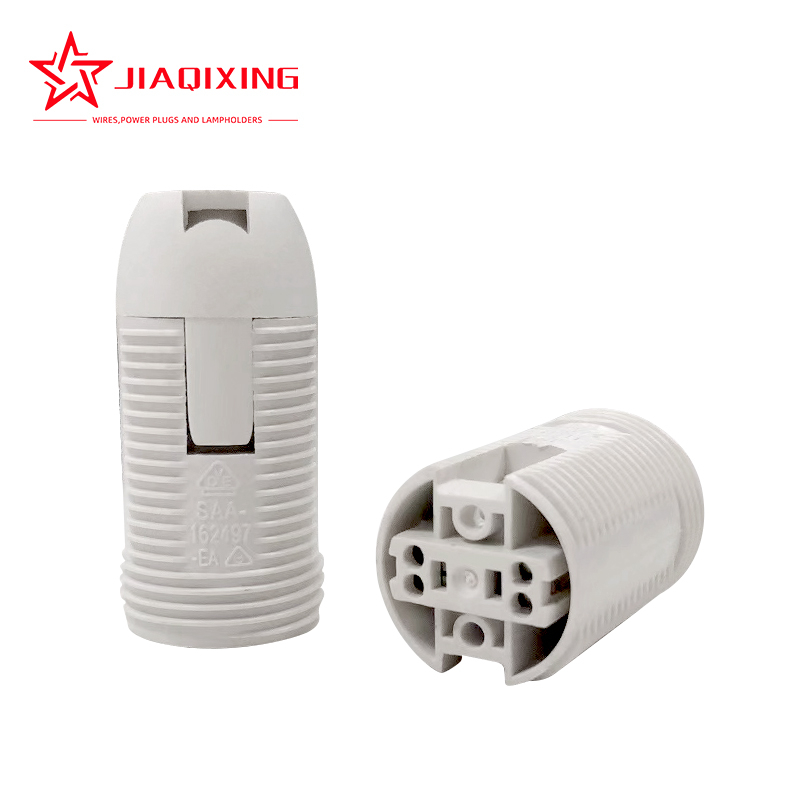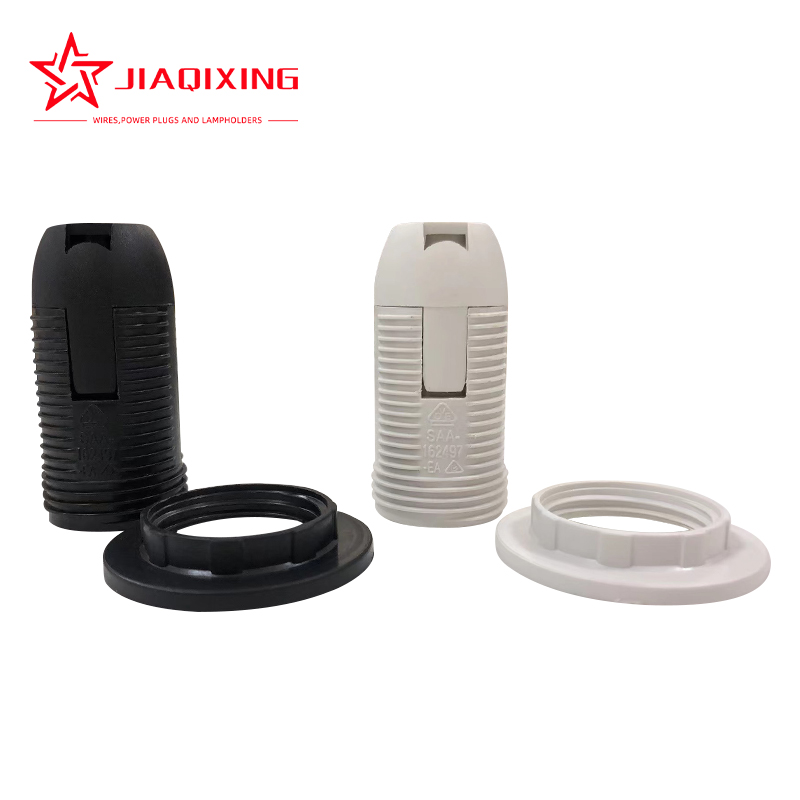T: +86-13715643479
E: contact@jqx-electric.com
E: contact@jqx-electric.com
(Huangwan Industrial Zone, Bianji Location) No.26, Zhouyuanzu Street, Hetang Town, Pengjiang District, Jiangmen City Guangdong Province, China
Views: 0 Author: Site Editor Publish Time: 2025-07-25 Origin: Site








Choosing the right light bulb base is crucial for both safety and functionality. Did you know the wrong base can lead to poor performance or even accidents?
In this post, we’ll explore the different types of light bulb bases and their applications. Whether you're setting up lighting for a home or a commercial space, understanding these bases is essential for optimal performance and safety.

Light bulb bases are essential components that connect the bulb to its power source. They create the electrical connection needed for the bulb to work properly. Simply put, the base is where the electricity flows from the socket to light the bulb. Without a secure and compatible base, the bulb wouldn’t function efficiently or safely.
A light bulb base typically has a metal or plastic socket that fits into a fixture. It ensures that the bulb stays in place while allowing electricity to flow through it.
Selecting the right light bulb base is more than just a matter of fitting the bulb into a socket. The base plays a key role in the safety, performance, and longevity of the fixture.
● Safety: A mismatched base can lead to loose connections or electrical malfunctions, which could pose fire hazards.
● Functionality: The base determines how well the bulb will function, including how bright it gets and how long it lasts.
● Longevity: The right base can extend the life of both the bulb and the lighting fixture by ensuring proper heat dissipation and electrical flow.
In essence, the type of base affects your overall lighting experience. Choosing the wrong one could lead to inefficient lighting or safety concerns.
Full threaded bases have a complete thread around the circumference. This design provides a secure and stable connection, especially in high-movement environments. For example, in pendant lights, the full thread ensures the bulb stays tightly in place, even when the fixture moves.
● Advantages:Secure fit
○ Stability in environments with vibrations or movement
○ Long-term durability
● Common Applications:Pendant lights
○ Ceiling fixtures
○ Larger commercial lighting setups
Half threaded bases feature a thread that only covers part of the circumference. This design is convenient for quick installation and easy removal, making it ideal for fixtures that require frequent bulb changes.
● Advantages:Easier to install and replace bulbs
○ Ideal for fixtures needing frequent bulb replacements
○ Less effort required to screw in or unscrew
● Common Applications:Table lamps
○ Wall-mounted lights
○ Task lighting
Bayonet bases operate on a push-and-twist mechanism. The bulb is inserted into the socket and then twisted to lock it in place. This ensures a secure connection that’s resistant to vibrations.
● Common Types:B22: One of the most common bayonet bases, often used in household lighting.
○ B15: A smaller variant typically used for more compact lighting fixtures.
● Advantages:Secure connection
○ Easy installation without the need for threading
○ Less likely to loosen due to vibrations
● Common Applications:Automotive lighting
○ Industrial lighting
○ Stage and theater lighting
Some competitors have introduced hybrid-style bases that combine the features of both full-thread and half-thread designs. These bases often feature locking mechanisms, such as clips or snap-on features, for added security. They provide a combination of easy installation and a strong connection.
● Features:Combines threading with locking mechanisms
○ Clips or snap-on features for secure installation
● Common Applications:Industrial machinery
○ Transportation vehicles
○ High-vibration environments
Plastic bases are lightweight and commonly used in many household lighting fixtures. Made from various plastics, these bases are easy to mold into different shapes and sizes, making them versatile for many types of bulbs.
● Pros:Lightweight
○ Affordable
○ Good electrical insulation
● Cons:Not as heat-resistant as ceramic or metal
● Common Applications:Household lighting
○ Standard E14/E27 screw-in bulbs
○ Desk lamps and ceiling fixtures
Ceramic bases are known for their high heat resistance and excellent electrical insulation properties. They are ideal for environments that involve high temperatures, such as halogen or incandescent bulbs.
● Pros:Superior heat resistance
○ Durable in high-temperature environments
○ Excellent electrical insulation
● Common Applications:Industrial lighting
○ High-wattage bulbs
○ Halogen bulbs
Metal bases, made from materials like brass or aluminum, provide durability and excellent conductivity. These bases are designed to enhance heat dissipation, making them perfect for high-powered lighting systems.
● Pros:Durable and strong
○ Excellent heat dissipation
○ High conductivity
● Common Applications:Commercial lighting
○ Chandeliers
○ Industrial lighting fixtures
Some manufacturers have started using composite materials to create bases that combine the benefits of various materials. These bases combine heat resistance with lightweight properties, offering an affordable solution for mid-range lighting needs.
● Pros:Heat resistance
○ Lightweight and affordable
○ Blends the benefits of multiple materials
● Common Applications:Mid-range consumer lighting setups
○ Energy-efficient bulbs
○ Decorative light fixtures
Fabric-braided cables give light bulb bases a stylish and vintage aesthetic. These cables are flexible and lightweight, making them ideal for decorative lighting applications.
● Pros:Flexible and easy to install
○ Vintage look that adds charm
○ Lightweight and easy to handle
● Cons:Less resistant to moisture and abrasion
● Ideal Uses:Decorative lighting fixtures
○ Pendant lights
○ Cafes and restaurants for a cozy atmosphere
PVC-sheathed wire is a durable and cost-effective option commonly used in various lighting setups. This material is resistant to moisture, chemicals, and abrasion, making it a solid choice for many applications.
● Pros:Moisture and chemical resistant
○ Affordable and reliable
○ Highly durable and long-lasting
● Common Applications:Outdoor wall lights
○ Garden lamps
○ Commercial and residential lighting
Rubber cords are perfect for lighting setups that require flexibility and shock resistance. They can withstand bending, twisting, and stretching, making them ideal for portable and vibration-prone fixtures.
● Pros:Shock-absorbing and flexible
○ Excellent for vibration-prone environments
○ Resistant to wear and tear
● Ideal Uses:Portable work lights
○ Stage lighting
○ Industrial lighting setups where movement is frequent
Some competitors have introduced innovative bases that include wireless charging capabilities. This allows users to install lights more easily without the hassle of dealing with direct wire connections.
● Benefits:Simplifies installation
○ No need for traditional wiring
○ Increases flexibility and ease of use
● Applications:Modern smart homes
○ Lighting automation systems
○ Wireless-enabled fixtures for convenience and ease

Make sure the light bulb base fits securely into your fixture's socket. Different fixtures require specific base types, such as E14 or E27 screw-ins or bayonet-style connections. A mismatch can cause a loose connection or prevent the bulb from fitting properly.
The power and heat of the bulb affect the material of the base. High-wattage bulbs, like halogens, require heat-resistant bases, such as ceramic or metal. Choosing the wrong base for a high-power bulb can lead to overheating or short-circuiting.
Consider where the bulb will be used. For indoor lighting, plastic or ceramic bases may be enough. But for outdoor or heavy-duty applications, you may need more durable materials like metal or bases with moisture-resistant wiring. The environment will influence the material choice and durability of the base.
If you frequently change bulbs, a half-threaded or bayonet base might be easier to work with. For hard-to-reach fixtures, you may want a base that simplifies installation. Keep in mind that some bases require more effort for replacement, while others are quick to install.
Using the wrong size or thread type can cause the bulb to fit loosely or not at all, creating safety hazards. It's essential to check the base's size and compatibility with your fixture before purchasing.
Some bulbs, especially high-wattage or halogen ones, produce a lot of heat. Choosing a base made from a material that can’t withstand these temperatures could cause it to melt or degrade over time. Ensure the material matches the bulb's heat output.
Smart bulbs are designed to fit into traditional light bulb bases, such as E26 or E27 screw-in bases, making it easy to upgrade your lighting without changing fixtures. These bulbs often feature wireless control, allowing you to adjust brightness, color, and even set schedules remotely through smart home apps.
Certain bases are tailored to work seamlessly with smart home systems. For example, some bases support features like Bluetooth or Wi-Fi connectivity, enabling smart bulbs to communicate directly with home automation hubs. These connections make it possible to control your lights via voice commands or a smartphone, bringing convenience and energy savings to your home.
The future of light bulb bases will likely see more wireless options and enhanced integration with Internet of Things (IoT) devices. We may soon see bases designed for even smarter bulbs, offering built-in wireless charging, energy monitoring, or even facial recognition for automatic adjustments.
As smart homes become more common, the demand for customizable, easy-to-install light bulb bases will increase. These innovations may allow seamless integration with other devices like smart thermostats, security systems, or home entertainment setups, making light control more intuitive and user-friendly than ever before.
Some competitors are now offering light bulb bases equipped with advanced smart wiring systems. These systems allow for remote control of various features, such as adjusting the brightness or changing the color of the light. With smart wiring, users can manage their lights seamlessly using voice commands, apps, or home automation hubs.
● Features:Remote control for brightness adjustments
○ Color-changing capabilities for customizable ambiance
○ Integration with home automation platforms like Google Home or Alexa
● Applications:Commercial spaces like offices or retail stores
○ High-end residential lighting systems where custom control is desired
This innovation is reshaping how people interact with lighting, giving them more flexibility and energy efficiency.
Another emerging trend is the ability to customize light bulb bases. Some manufacturers now offer light bulb bases that can be tailored to suit specific fixtures, allowing for adjustable thread sizes or the use of innovative materials. This customization ensures a better fit for unique or hard-to-find lighting applications.
● Key Features:Adjustable thread sizes for diverse fixture needs
○ Use of specialized materials like heat-resistant composites or eco-friendly plastics
○ Custom designs for unique fixtures
● Common Applications:Vintage or antique lighting where original designs must be preserved
○ Custom-built lighting systems in high-end architecture or interior design
These customizable bases provide flexibility for unique lighting projects, combining functionality and style in a way that off-the-shelf products cannot match.
Understanding light bulb base types is crucial for different lighting setups. The choice of base material and wiring configuration directly impacts the performance and safety of lighting fixtures.
When selecting a base, consider the specific needs of your lighting. Whether for home, office, or industrial use, the right base ensures functionality and longevity.